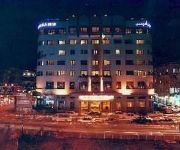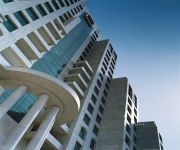Safety Score: 5,0 of 5.0 based on data from 9 authorites. Meaning it is not safe to travel Syria.
Travel warnings are updated daily. Source: Travel Warning Syria. Last Update: 2024-08-13 08:21:03
Discover Dimashq al Qadīmah
The district Dimashq al Qadīmah of Damascus in Damascus Governorate is a district in Syria and is a district of the nations capital.
Looking for a place to stay? we compiled a list of available hotels close to the map centre further down the page.
When in this area, you might want to pay a visit to some of the following locations: Jaramana, Babila, Al Hajar al Aswad, `Irbin and Kafr Batna. To further explore this place, just scroll down and browse the available info.
Local weather forecast
Todays Local Weather Conditions & Forecast: 17°C / 63 °F
| Morning Temperature | 12°C / 53 °F |
| Evening Temperature | 17°C / 63 °F |
| Night Temperature | 14°C / 58 °F |
| Chance of rainfall | 0% |
| Air Humidity | 41% |
| Air Pressure | 1019 hPa |
| Wind Speed | Gentle Breeze with 6 km/h (4 mph) from North-East |
| Cloud Conditions | Clear sky, covering 0% of sky |
| General Conditions | Sky is clear |
Friday, 22nd of November 2024
18°C (64 °F)
15°C (59 °F)
Sky is clear, light breeze, clear sky.
Saturday, 23rd of November 2024
18°C (65 °F)
16°C (61 °F)
Sky is clear, light breeze, clear sky.
Sunday, 24th of November 2024
19°C (67 °F)
11°C (51 °F)
Sky is clear, moderate breeze, clear sky.
Hotels and Places to Stay
SEMIRAMIS
FOUR SEASONS DAMASCUS
QUEEN CENTRE ARJAAN BY ROTANA
Videos from this area
These are videos related to the place based on their proximity to this place.
Minaret of Jesus in Damascus
Minaret of Jesus is one of 3 minarets of the Great Umayyad Mosque in Damascus.
New Damascus Pulse || نبض دمشق الجديدة
دمشق كما هي، إنطلاقاً من المزة حتى قاسيون وصولاً إلى مشروع دمر ثم العودة من طريق الربوة إلى ساحة الأمويين،...
أغنية نادي الوحدة الدمشقي (جوا الشام) Alwahdeh Club , Damascus Syria
تأسس سنة : 1928 كل نادي الوحدة الملقب ( بالبرتقالة الدمشقية ) ركيزة أساسية من ركائز رياضة العاصمة خاصة والرياضة...
Hakawati at al-Nawfara coffeehouse, Damascus
http://www.ibnibnbattuta.com/blog/syria/ - The hakawati (storyteller, حكواتي) Abu Shadi at al-Nawfara (النوفرة) coffeehouse in the Old City, Damascus, Syria.
مدينة الألعاب مدينة الملاهي Amusement park Rollercoaster City Games
صور ملتقطة من مدينة الملاهي في دمشق منطقة المزة مواقعنا على النت الموقع الأول في العالم http://www.aboaumir.blogspot.com...
هنا دمشق...Here is Damascus,Syria (أصالة نصري-هذي دمشق)
هنا دمشق من كل أنحاء العالم ...نصرخ ونقول ان كل أصقاع الأرض تنده وتصرخ وتقول دمشق هنا الحرية وهنا الروح وهنا...
Videos provided by Youtube are under the copyright of their owners.
Attractions and noteworthy things
Distances are based on the centre of the city/town and sightseeing location. This list contains brief abstracts about monuments, holiday activities, national parcs, museums, organisations and more from the area as well as interesting facts about the region itself. Where available, you'll find the corresponding homepage. Otherwise the related wikipedia article.
Barada
The Barada is the main river of Damascus, the capital city of Syria. It flows through the spring of ‘Ayn Fījah (عين فيجة), about 27 km north west of Damascus in the Anti-Lebanon Mountains, but its source is Lake Barada, located at about 8 km from Zabadani. The Barada descends through a steep, narrow gorge named "Rabwe" before it arrives at Damascus, where it divides into seven branches that irrigate the oasis of Ghouta (الغوطة). The 'Barada' name is thought to derive from 'barid', i.e. 'cold'.
Al-Zahiriyah Library
The Az-Zahiriyah library in Damascus, Syria dates back to 1277, taking its name from its founder Sultan Baibars (1223–1277). Building this library was his father’s idea but he died before he could achieve it. Initially Az-Zahiriah was a public school in charge of teaching Quranic sciences. The decorations, carvings, and writing on the building walls, in addition to the gate which bears geometric designs and patterns, make the library one of the most important buildings in Damascus.
Bab al-Saghir
Bāb Saghīr, also called "Goristan-e-Ghariban", is an ancient cemetery and street in Damascus, Syria, with tombs on either side of the road. It is located in the Dimashq neighborhood, southwest of Umayyad Mosque.
Azm Palace
Azm Palace is a palace in Damascus, Syria which was originally built in 1750 as a residence for the Ottoman governor of Damascus As'ad Pasha al-Azm. The palace now houses the Museum of Arts and Popular Traditions.
Bab Tuma
Bab Tuma is a borough of Old Damascus in Syria, one of the gates inside the historical walls of the city, and a geographic landmark of Early Christianity. It owes its name to Thomas, one of the twelve apostles of Jesus Christ. Famous residents included: Saint Paul the most notable of Early Christian missionaries (hence expressions such as “the road to Damascus experience”), Saint Thomas himself who after lending his name to the neighborhood went on to explore India.
Al-Adiliyah Madrasa
Al-Adiliyah Madrasa is a madrasah located in Damascus, Syria. Founded in 1215 by Sultan Al-Adil I. He was buried in the school. And his son Al-Mu'azzam finished building the school. The madrasa is considered an important example of Ayyubid architecture in Syria.
Damascus Straight Street
The Damascus Straight Street; biblical wording, Street Called Straight, is the Roman street that runs from east to west in the old city of Damascus, Syria. It was visited by St. Paul as recorded in the book of Acts and contains several interesting sights from the Roman, Christian and Islamic periods. Under the Greeks, the old city of Damascus was laid out after the grid pattern designed by Hippodamus.
Bab al-Faradis
Bab al-Faradis or Bab al-Amara is one of the eight ancient city-gates of Damascus, Syria. One of the city's northern gates, it was named "the paradise gate" in the Roman age because it was surrounded by numerous water sources and gardens. The other name, Bab Al-Amara, refers to a name of a famous district in the old city where people used to meet in the 14th century.
Bab al-Salam
Bab al-Salam (The Gate of Peace) is one of the eight ancient city-gates of Damascus, Syria.
Beit al-Mamlouka Hotel
Beit al-Mamlouka is a luxury boutique hotel located in the old city of Damascus, Syria. It was established in 2005 in the city's oldest borough, the Christian quarter of Bab Touma ("St. Thomas' Gate"). The hotel is a restoration of a 17th century old Damascene house and offers 8 different rooms each named after a famous historic figure of Arab or Muslim history, like Averroes and Baybars.
Sayyidah Ruqayya Mosque
Sayyidah Ruqayya Mosque is a shrine located in Damascus, Syria, that contains the grave of Sukayna (née Ruqayyah), the infant daughter of Husayn ibn ‘Alī. After enduring the advent of Karbalā and the torturous journey to Damascus that followed it, Sukayna died at the age of four in Yazid's prison, where she was originally buried. Years later however, upon the flooding of her gravesite, her grave was reopened and she was moved to the site where the Mosque now stands.
Bayt al-Aqqad
Bayt al-Aqqad (Aqqad House) is an old Damascene house that hosts the Danish Institute in Damascus, Syria. The history of the building is more than 2000 years: Remains of the theatre of Herod the Great were found in the outer walls and now forms a part of the wall in the secretary’s office. Other parts of the house include the northern and southern buildings which were built in the late 15th century in a late Mamluk style and decoration.
Maktab Anbar
Maktab Anbar (Anbar Office) is an old house in the center of Old Damascus near the Umayyad Mosque and a short distance from the Street Called Straight. The house was built as a private residence by a local Jewish notable Mr. Anbar in the mid 19th century. The house is built around three courtyards, first the formal reception courtyard, behind this the attractive female courtyard, and finally the spartan servants' courtyard.
Khan As'ad Pasha
Khan As'ad Pasha is the largest khan in the Old City of Damascus, covering an area of 2,500 square metres . Situated along Al-Buzuriyah Souq, it was built and named after As'ad Pasha al-Azm, the governor of Damascus, in 1751-52. Khan As'ad Pasha has been described as one of the finest khans of Damascus, and the most "ambitious" work of architecture in the city. Throughout the Ottoman era, it hosted caravans coming from Baghdad, Mosul, Aleppo, Beirut and elsewhere in the Middle East.
Khan Sulayman Pasha
Khan Sulayman Pasha is a large khan in the Old City of Damascus. Located in the walled city of Damascus on the eastern side of the Street Called Straight, facing Suq al-Khayyatin and Al-Buzuriyah Souq. It was built and named after Sulayman Pasha al-Azm, the governor of Damascus, in 1732-36. The khan is popularly known as Khan al-Hamasina because traders from Homs used to rent its shops and warehouses.
Al-Buzuriyah Souq
Al-Buzuriyah Souq is a historical souk located to the south of the Umayyad Mosque inside the old walled city of Damascus, Syria. The souk is famous for its spices vendors, and the many historical khans located along it, including Khan As'ad Pasha. On its southern end it meets Medhat Pasha Souq.
Medhat Pasha Souq
Medhat Pasha Souq (also called Al-Taweel Souq) is a historical souk which forms the western half of the Street Called Straight inside the old walled city of Damascus, Syria. It was named after the Ottoman governor of Syria Midhat Pasha who renovated it and ordered its coverage with a lead-shade. Many smaller souqs branch out of Medhat Pasha including al-Buzuriyah Souq and al-Harir Souq. Many important sites are located along the street including Maktab Anbar.
Bakdash (ice cream parlor)
For the founder of the Syrian Communist Party, see Khalid Bakdash. Bakdash also Bakdach is an ice cream parlor in Damascus, Syria. The shop was established around 1885 in Al-Hamidiyah Souq in the old city of Damascus. It is famous for its pistachio-covered Booza, a pounded ice cream with an elastic texture made of mastic and sahlab. It is famous around the Arab World and has become a popular tourist attraction.
Khan al-Harir
Khan al-Harir is a large khan in the Old City of Damascus covering an area of 2,500 square metres . It was built on the orders of Darwish Pasha, the governor of Damascus, in 1573-74. Darwish Pasha founded it as a waqf for the benefit of the Darwish Pasha Mosque. The Khan was the first great caravanserai inside the old city walls of Damascus. Its construction marks the beginning of a shift in mercantile and trade activity to the area southwest of the Umayyad Mosque.
Mariamite Cathedral of Damascus
Mariamite Cathedral of Damascus is one of the oldest Greek Orthodox churches in Damascus, Syria and holds the seat of the Greek Orthodox Church of Antioch. The church complex is located on the Street Called Straight.
Al-Shaghour
Al-Shaghour is a neighborhood located in the old walled city of Damascus, Syria. Al-Shaghour is one of the oldest recorded neighborhoods in the city. Parts of the neighborhood made up the Jewish quarter, as it had the largest Jewish community in the city. The neighborhood is also home for many of the prominent Shiite families in Damascus. Al-Ameen street, named after a prominent Shiite figure, is the main road in the neighborhood and accommodates the market place and the main shops.
Nur al-Din Bimaristan
Nur al-Din Bimaristan is a large medieval bimaristan ("hospital") in Damascus, Syria. It is located in the al-Hariqa quarter in the old walled city, to the southwest of the Umayyad Mosque. It was built and named after the Zengid Sultan Nur ad-Din in 1154. The bimaristan is well known for its unusual portal, which displays an antique lintel and a curious flattened muqarnas vault. It is also unusual in its full-scale Mesopotamian-style muqarnas vault over the vestibule.
Qubbat al-Khazna
Qubbat al-Khazna, meaning the "Dome of the Treasury", is an old structure, located inside the courtyard of the Umayyad Mosque in Damascus, Syria. It is an octagonal structure decorated with mosaics, standing on eight Roman columns. The Dome of the Treasury, like the mosque's prayer hall facade, was once completely covered in the colorful mosaic decoration for which the mosque was famous. The dome was built under orders from the governor of Damascus, Fadl ibn Salih, in 789.
Mausoleum of Saladin
The Mausoleum of Saladin holds the resting place and grave of the medieval Kurdish Ayyubid Sultan Saladin. It is located next to the northwest corner of the Umayyad Mosque in Damascus, Syria. The mausoleum was built in 1196, three years after the death of Saladin. It was once part of the al-Aziziyah madrasah, but nothing remains of the school.
Temple of Jupiter, Damascus
The Temple of Jupiter in Damascus was built by the Romans, beginning during the rule of Augustus and completed during the rule of Constantius II. An ancient Aramaean temple to Hadad once stood on this site. The Romans associated Hadad with Jupiter, and rebuilt the temple in Jupiter's name. The temple drew large crowds to its festivals and Damascus became famous as the city of Jupiter. Theodosius I converted the temple to a church dedicated to John the Baptist.
















